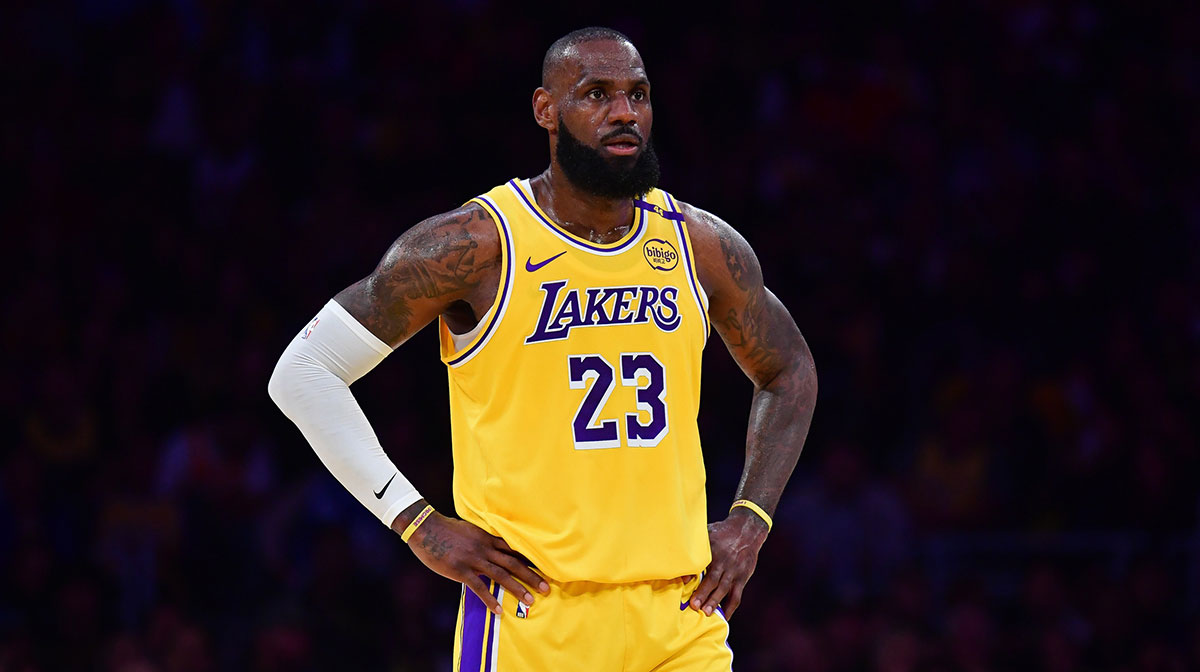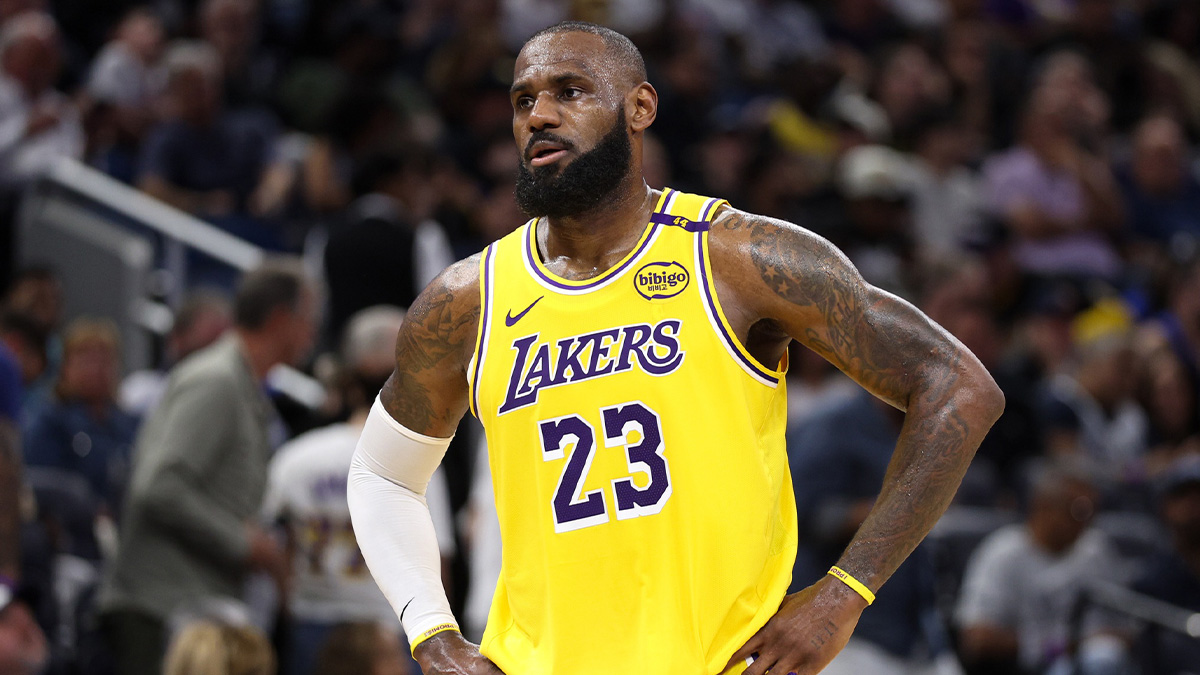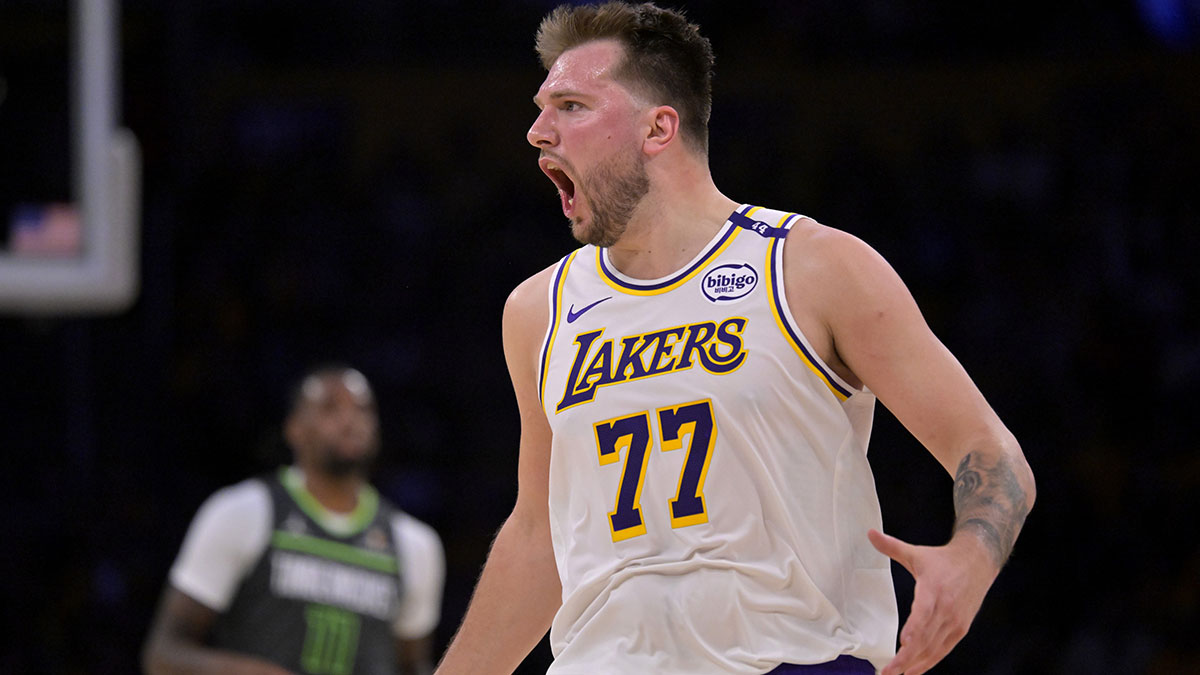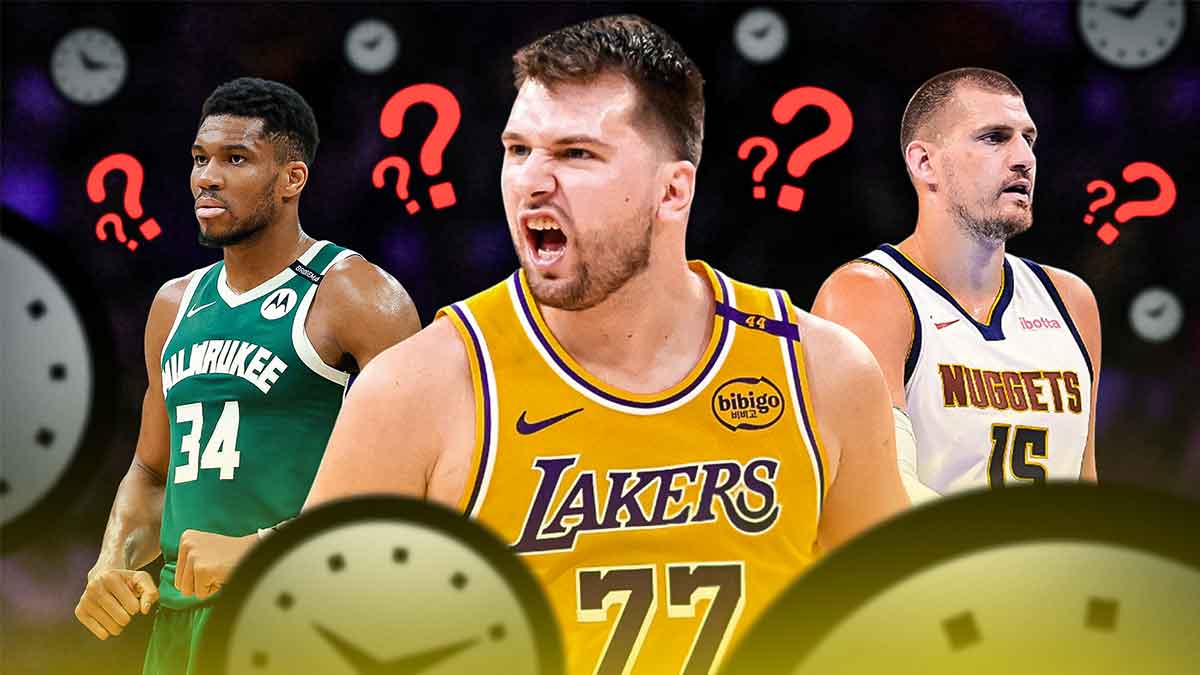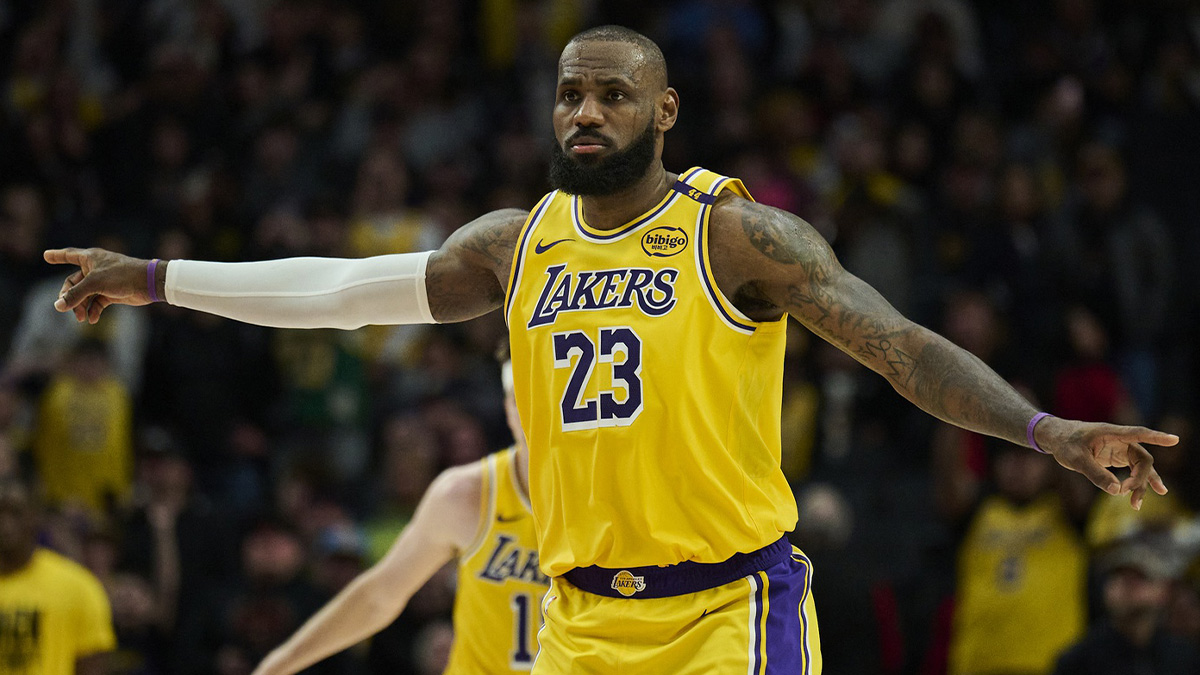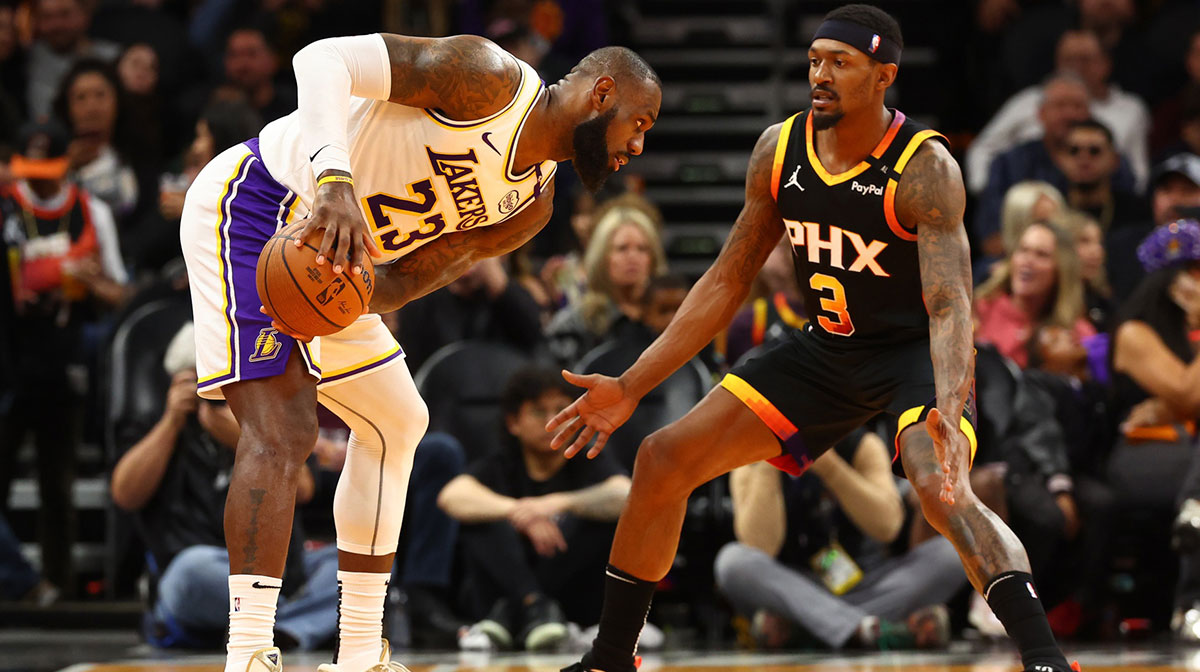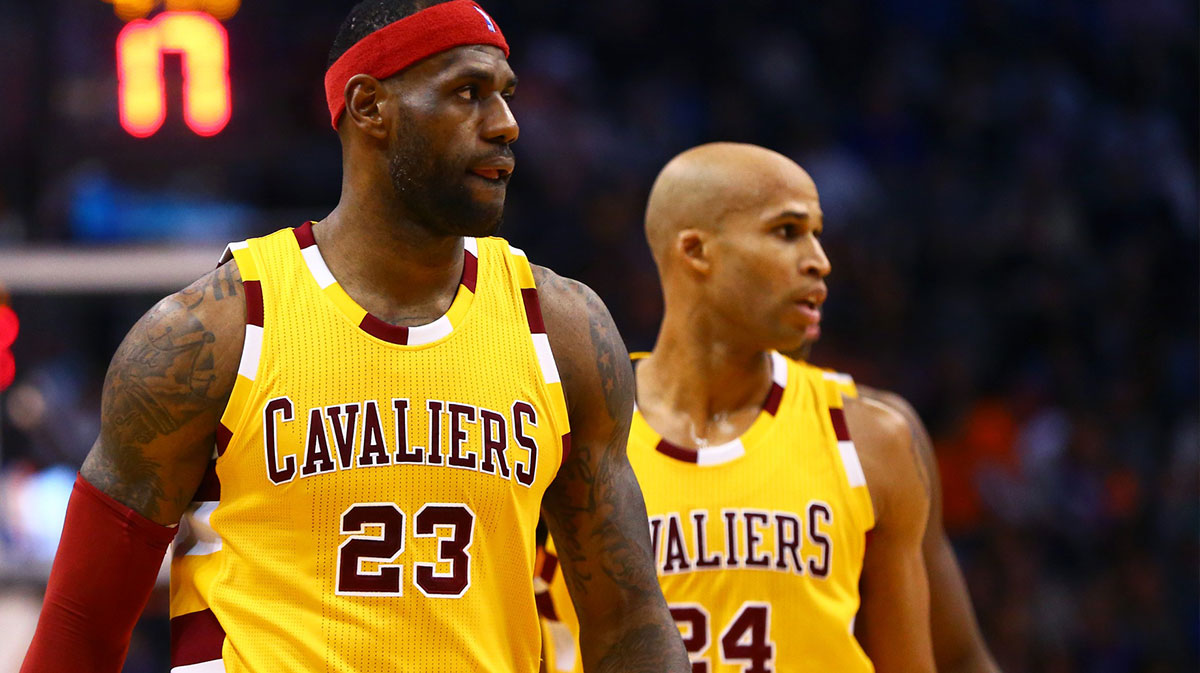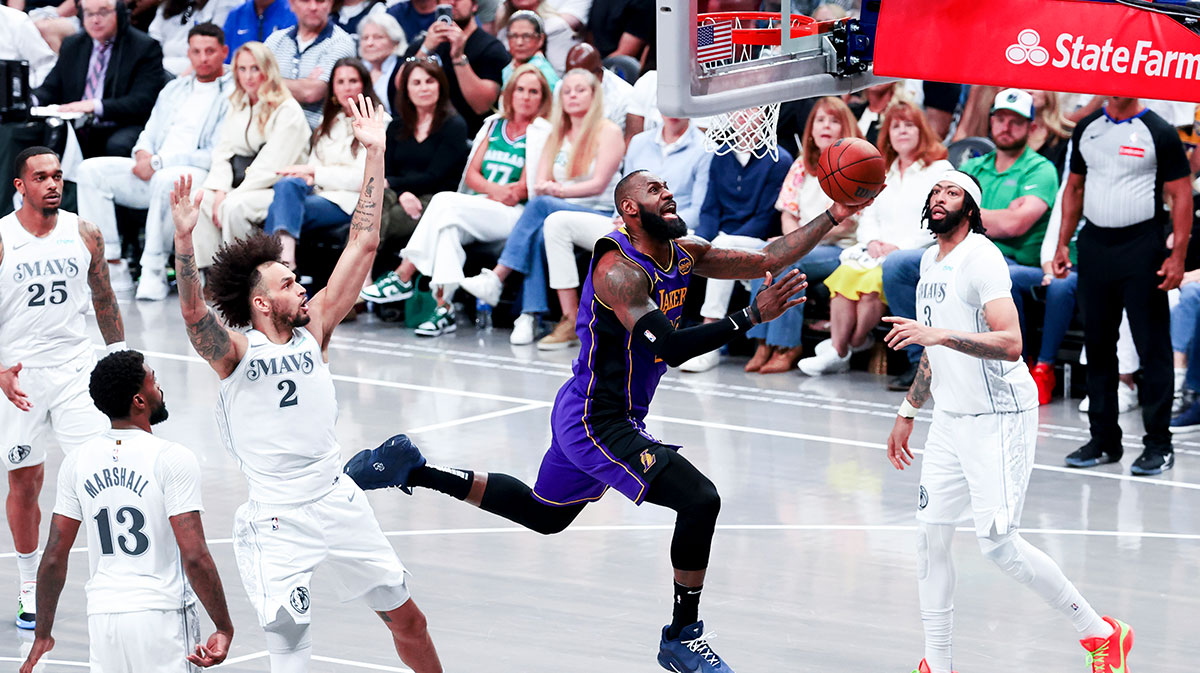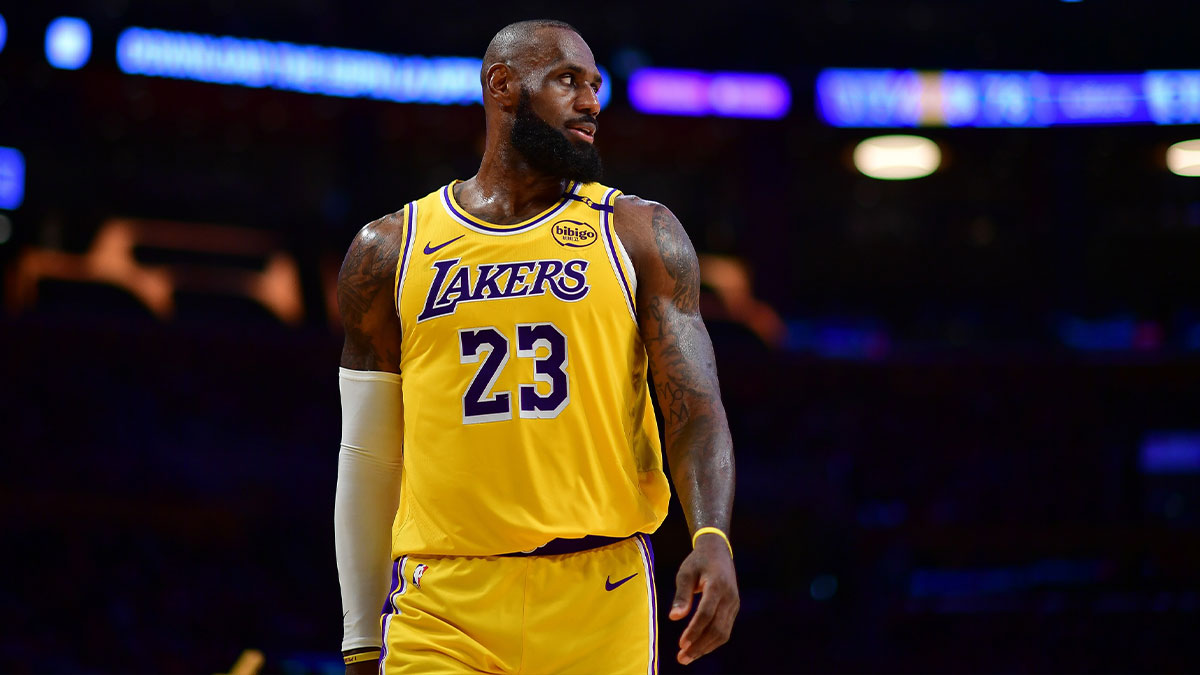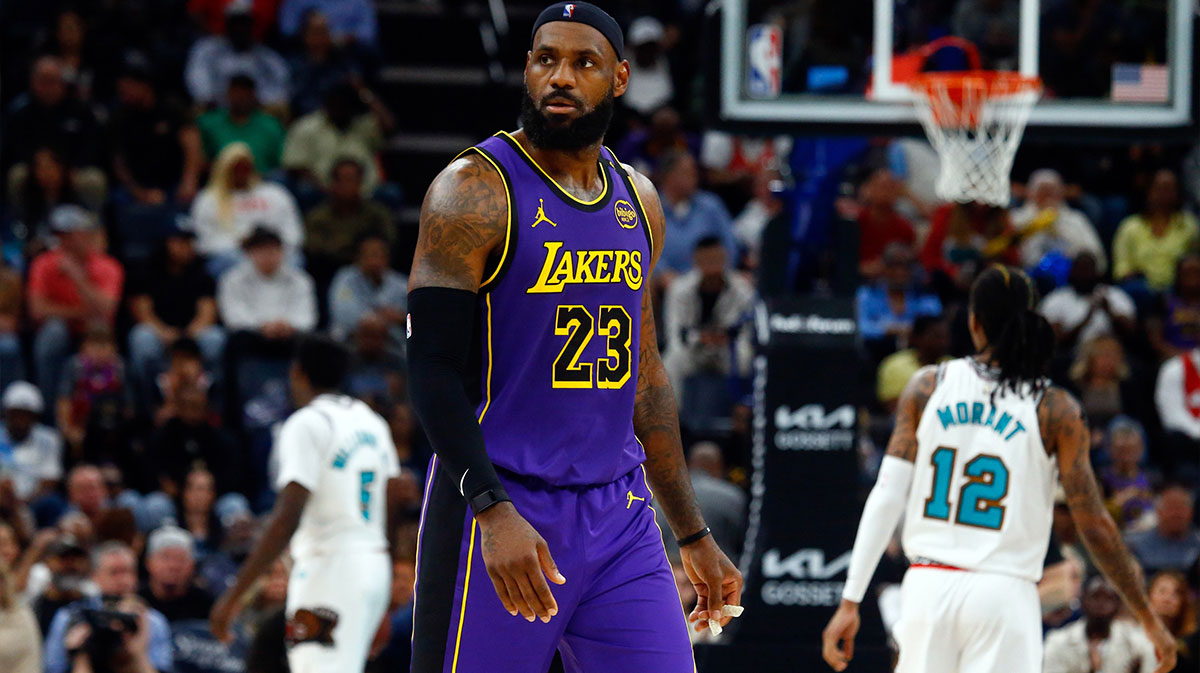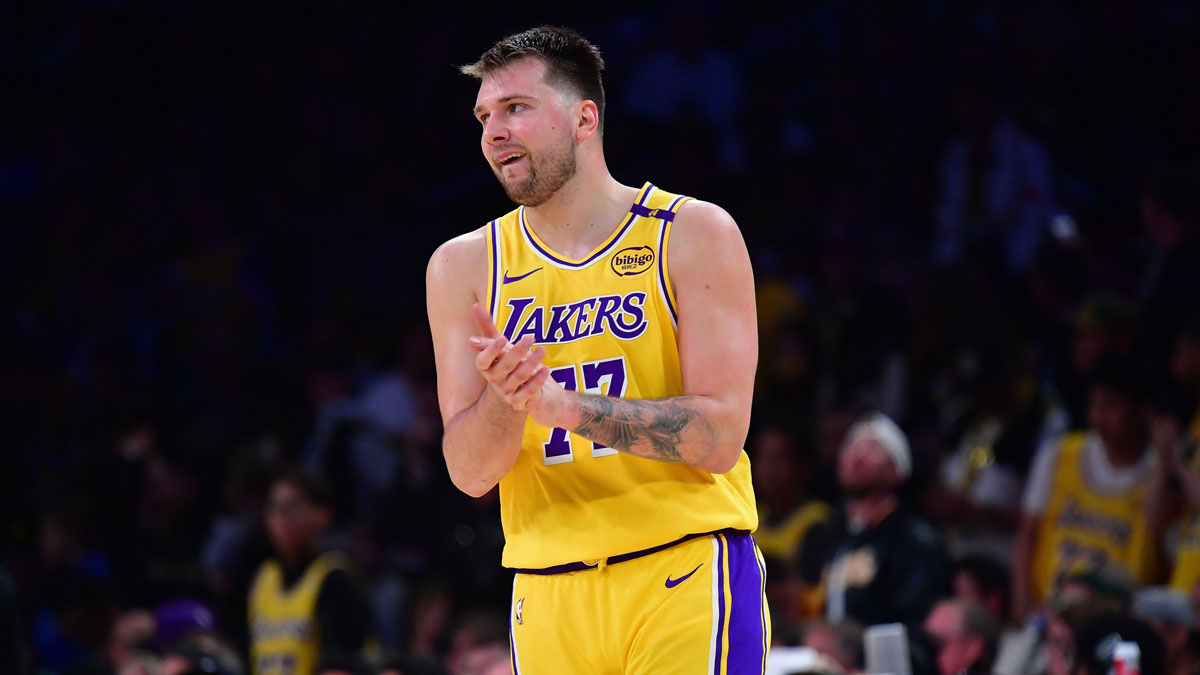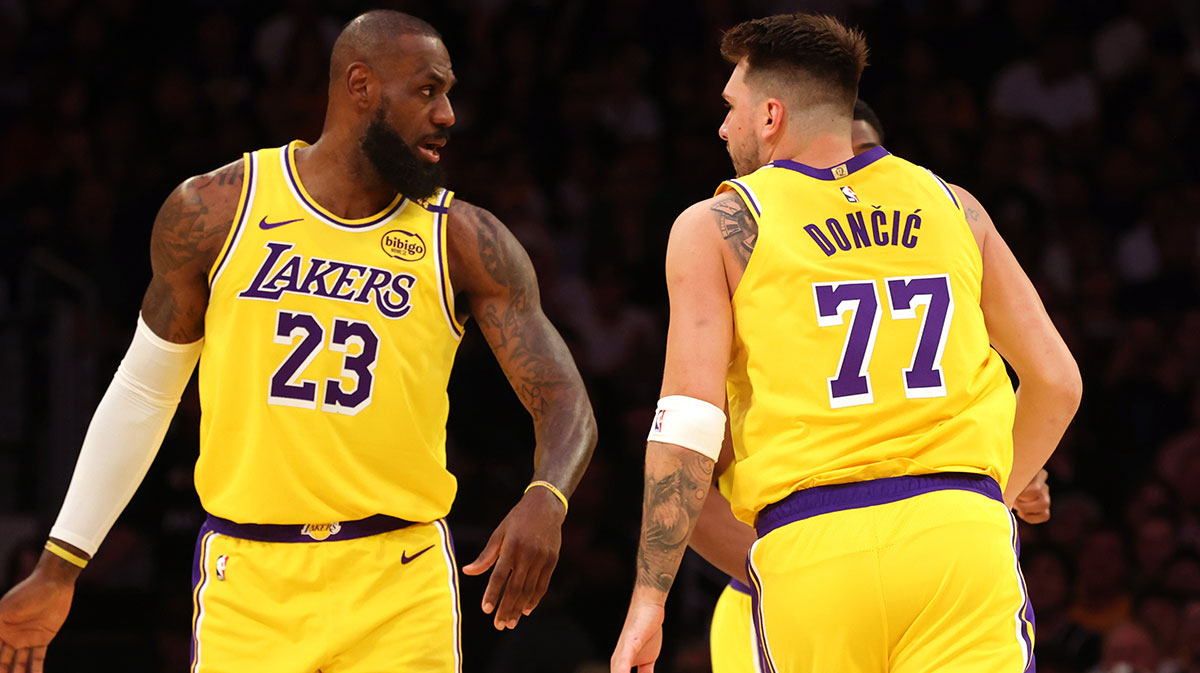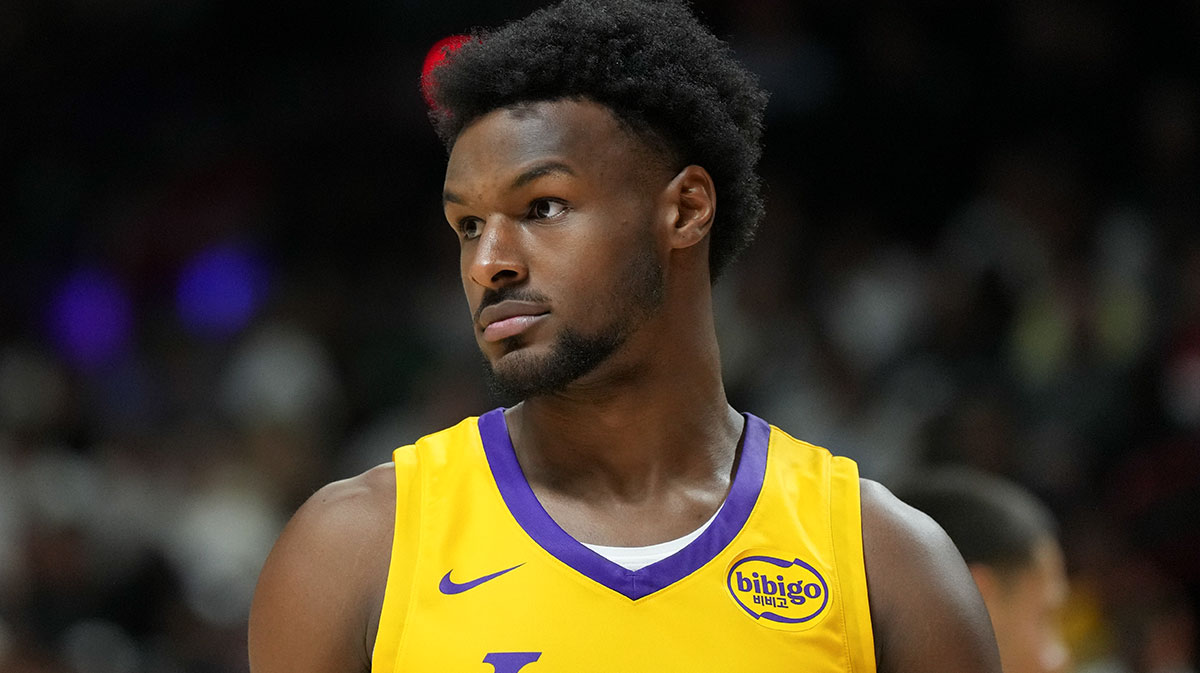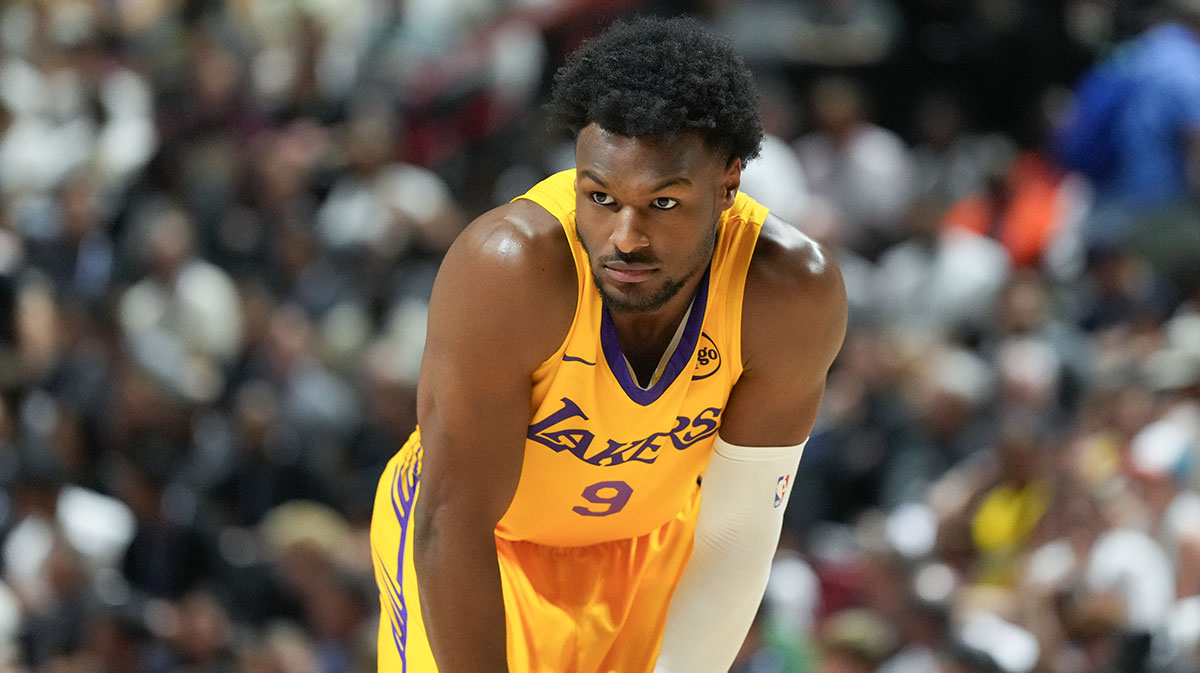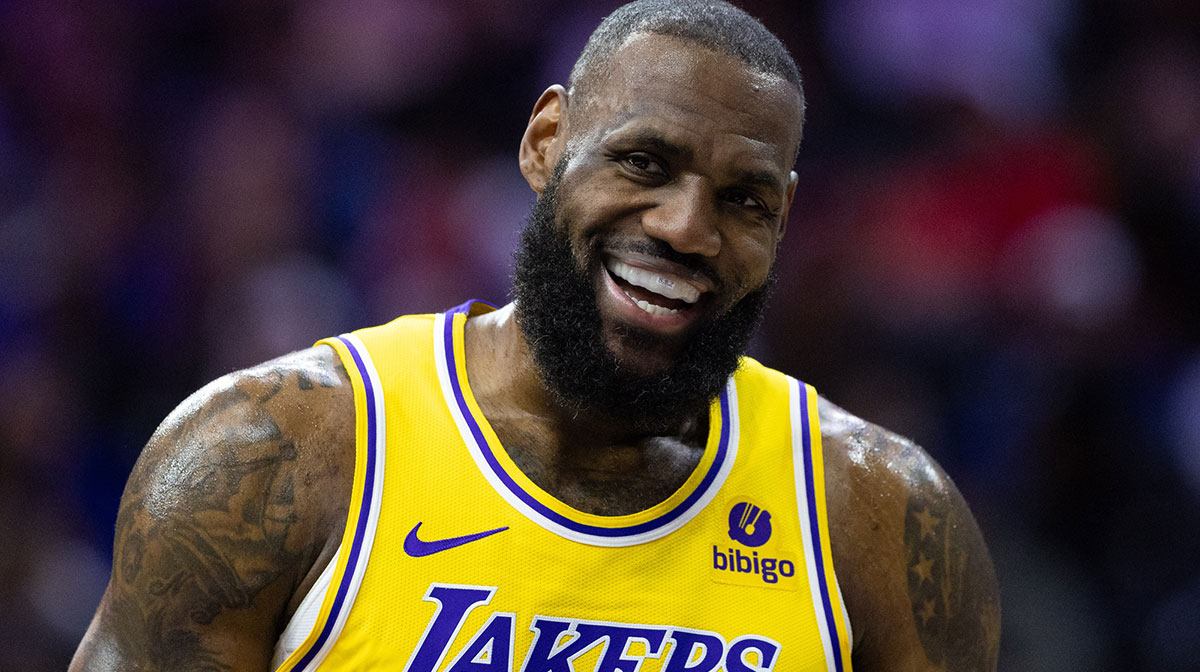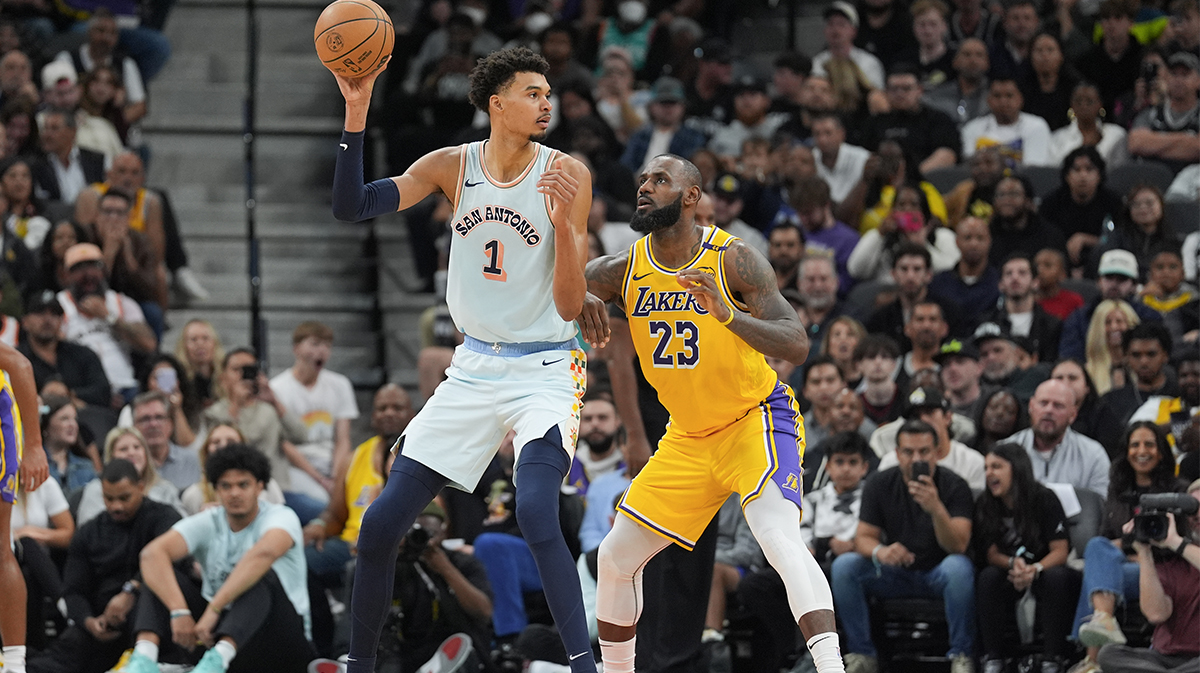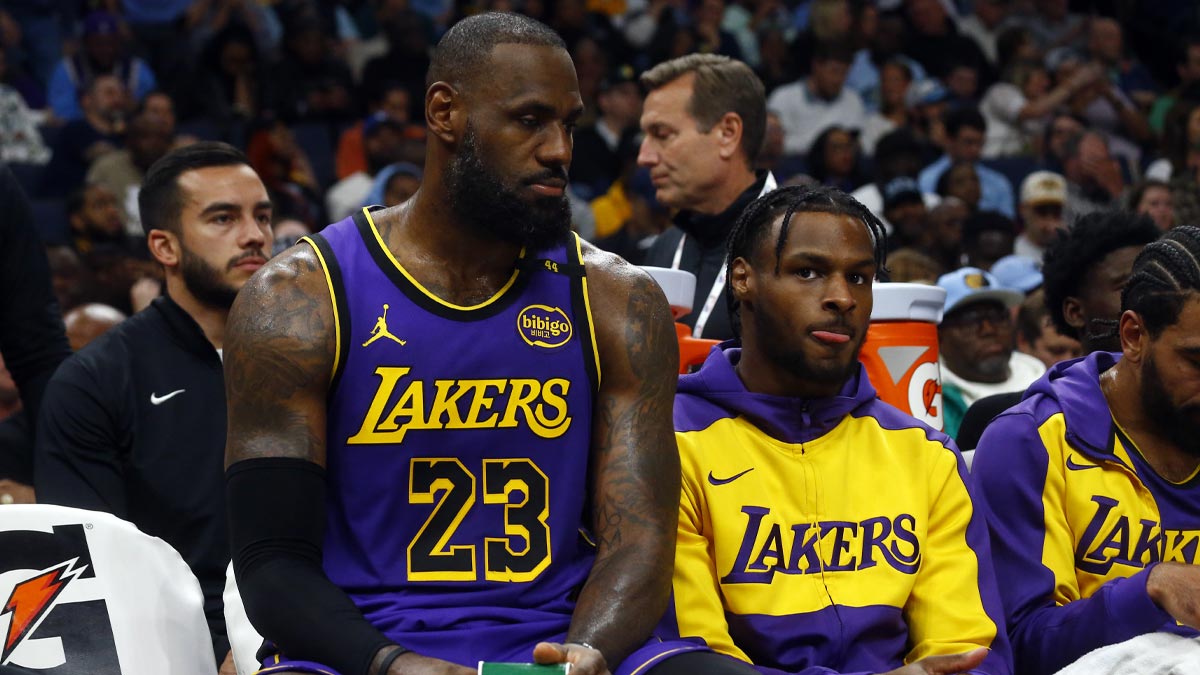As March fast approaches and the first half of the NBA season nearing its close, Anthony Davis' injury may not be the biggest problem the Los Angeles Lakers are facing.
On Saturday night, the defending champions were once again frost-bitten by their frigid 3-point shooting in a 96-94 loss to the Miami Heat in the rematch of the 2020 NBA Finals–this time at Staples Center. L.A. dropped to 22-9 on the season and into the no. 3 spot in the Western Conference standings.
The Lakers shot 13-of-45 from beyond the arc, contributing to the team's 39.3-percent night from the field overall. LeBron James (37.2 percent from three this season) made one of eight attempts from deep.
The Heat, as a matter of fact, were even cooler than the Lakers from 3-point land. Miami hit eight of 28 attempts (28.6 percent), though that has generally been par for the course of Erik Spoelstra's squad in 2019-20, who ranks 24th in 3-point accuracy (35.1 percent) entering the weekend.
However, the Lakers went particularly cold in the fourth quarter of the contest.
LAL have been playing with what look like tired legs for a couple of weeks now, perhaps supported tonight by the 4th Q shooting from 3:
LeBron: 0 for 4
Kuz: 0 for 4
Gasol/Caruso/Matthews/THT: all 0 for 1
KCP: 1 for 1— Mike Trudell (@LakersReporter) February 21, 2021
James, Kyle Kuzma (4-11 3PT) and Wes Matthews (2-7) each missed key triples in big moments, while Alex Caruso bricked a transition jumper at the buzzer that would've tied the game (not a three, but indicative of their perimeter shooting woes). Overall, the Lakers missed 12 of their 13 triple attempts in the final quarter.
Lol we gonna talk about this side of the backboard shot or reserve that for Paul George only? 🤣 pic.twitter.com/ruusUcBibk
— Tomer Azarly (@TomerAzarly) February 21, 2021
“Down the stretch, we were just not being patient enough,” Lakers guard Kentavious Caldwell-Pope said in his post-game Zoom presser. “Trying to force a lot of things. jumpers that are either to get even or get in the lead. Towards the end of game, we were not playing Lakers basketball like we normally do.”
L.A. picked up its defense and held the Heat to 15 points in the final frame. On offense, they “generated good looks,” per head coach Frank Vogel. However, they were unable to overcome their failure to make a big shot in the final minutes.
LeBron James not bothered by Lakers' shooting struggles
James downplayed the Lakers' shooting struggles after the game. “We got some great looks … Shots just weren't falling in the fourth.”
On a positive note, 45 attempts from beyond the arc marked the Lakers' highest total of the season, and Vogel was satisfied with his team's willingness to let it fly.
“We've been hesitant over the last few games from the three-point line so there was an encouragement piece to that,” Vogel explained afterward. He also noted how Miami leads the NBA in paint defense and how they “make you beat them over the top.”
“If you're knocking down shots, you're going to have a good night against this team. If you're not, it's gonna be a long night.”
The loss dropped the Lakers to 5-2 on the season without Davis, but 0-2 against playoff-caliber opponents–if you include Miami. The Purple and Gold were not competitive at all against the Brooklyn Nets on Thursday, falling 109-98 while going 8-of-30 from downtown.
Lakers' troubling 3-point trend
For what it's worth, the Lakers' abysmal late-game shooting performance was illustrative of a more troubling trend of late. Entering Saturday, through the first 16 games of the season, the Lakers were hitting 40 percent of their threes (12.9 makes per 32.2 attempts per game)—amongst the most accurate teams in basketball.
Since then, the champs have regressed to the mean. In the previous 14 games (not including their struggles against Miami), Vogel's squad has nailed just 30.2 percent of their treys (8.4 makes on 27.6 attempts per game).
“We're figuring out how to play without one of our creators in Dennis [Schroder], and one of our stars in A.D.,” Caruso said postgame. “That's going to take a little time … at times we played really good offense tonight, got open shots…that's all you can really ask for. The shots are going to go in eventually … law of averages.”
Through mid-January, Caruso was hitting over 58 percent percent of his 3s and leading the NBA. Since then, he's under 30 percent. Caldwell-Pope was shooting nearly 57 percent on over four attempts per game through the first 13 games, but he has been under 24 percent ever since (not including Saturday).
Cumulatively, in their last five games against playoff-caliber competition—Miami on Saturday, Brooklyn on Thursday, two losses to the Denver Nuggets and one-point Ws over the Boston Celtics (1/3o) and Philadelphia 76ers (1/27)—the Lakers have shot 28.5 percent (52-of-182) from beyond-the-arc, which would easily rank last in basketball (the Cleveland Cavaliers are currently 30th, at 33.9 percent).
Yet, James has the same trust in his team's ability to find its stroke. In fact, he echoed Caruso's sentiments, nearly verbatim.
“I don't think it's any reason for that,” LeBron said about their inopportune shooting. “Our guys do a great job in the gym, we all put in the work … The law of averages will even itself out.” He reminded folks that the Lakers dealt with cold stretches last season, including during the playoffs.
As the Lakers tread water without AD—and Schroder, at least for the next two games—they'll hope to prove Caruso and James's theory right. Otherwise, GM Rob Pelinka may need to look elsewhere for perimeter assistance, either on the buyout market or trading block.
If the problem persists after Davis returns, what seemed like a strength early in the season could end up being the Lakers' downfall.

